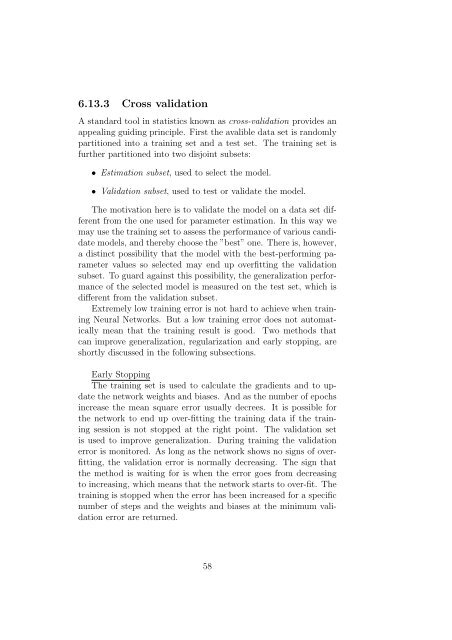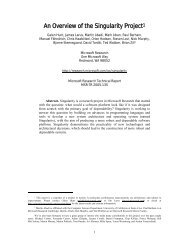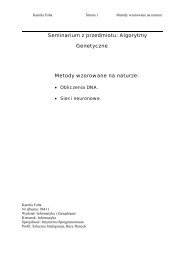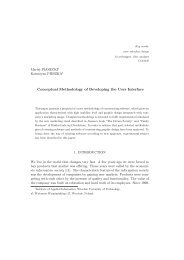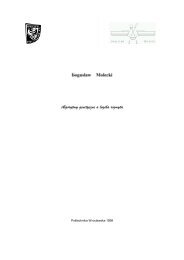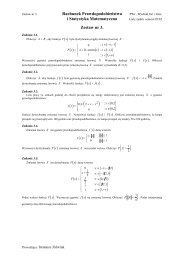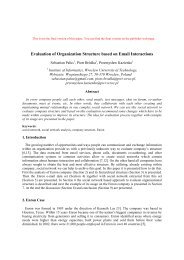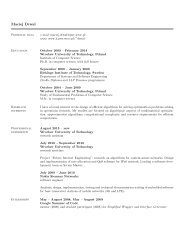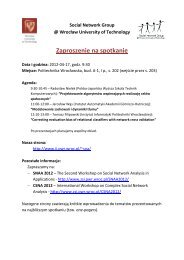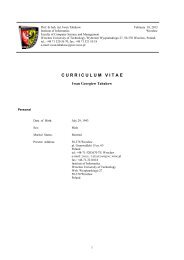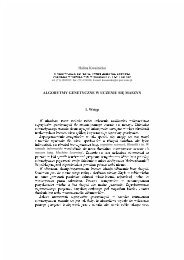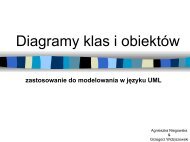Chapter 2 Introduction to Neural network
Chapter 2 Introduction to Neural network
Chapter 2 Introduction to Neural network
You also want an ePaper? Increase the reach of your titles
YUMPU automatically turns print PDFs into web optimized ePapers that Google loves.
6.13.3 Cross validation<br />
A standard <strong>to</strong>ol in statistics known as cross-validation provides an<br />
appealing guiding principle. First the avalible data set is randomly<br />
partitioned in<strong>to</strong> a training set and a test set. The training set is<br />
further partitioned in<strong>to</strong> two disjoint subsets:<br />
• Estimation subset, used <strong>to</strong> select the model.<br />
• Validation subset, used <strong>to</strong> test or validate the model.<br />
The motivation here is <strong>to</strong> validate the model on a data set different<br />
from the one used for parameter estimation. In this way we<br />
may use the training set <strong>to</strong> assess the performance of various candidate<br />
models, and thereby choose the ”best” one. There is, however,<br />
a distinct possibility that the model with the best-performing parameter<br />
values so selected may end up overfitting the validation<br />
subset. To guard against this possibility, the generalization performance<br />
of the selected model is measured on the test set, which is<br />
different from the validation subset.<br />
Extremely low training error is not hard <strong>to</strong> achieve when training<br />
<strong>Neural</strong> Networks. But a low training error does not au<strong>to</strong>matically<br />
mean that the training result is good. Two methods that<br />
can improve generalization, regularization and early s<strong>to</strong>pping, are<br />
shortly discussed in the following subsections.<br />
Early S<strong>to</strong>pping<br />
The training set is used <strong>to</strong> calculate the gradients and <strong>to</strong> update<br />
the <strong>network</strong> weights and biases. And as the number of epochs<br />
increase the mean square error usually decrees. It is possible for<br />
the <strong>network</strong> <strong>to</strong> end up over-fitting the training data if the training<br />
session is not s<strong>to</strong>pped at the right point. The validation set<br />
is used <strong>to</strong> improve generalization. During training the validation<br />
error is moni<strong>to</strong>red. As long as the <strong>network</strong> shows no signs of overfitting,<br />
the validation error is normally decreasing. The sign that<br />
the method is waiting for is when the error goes from decreasing<br />
<strong>to</strong> increasing, which means that the <strong>network</strong> starts <strong>to</strong> over-fit. The<br />
training is s<strong>to</strong>pped when the error has been increased for a specific<br />
number of steps and the weights and biases at the minimum validation<br />
error are returned.<br />
58


